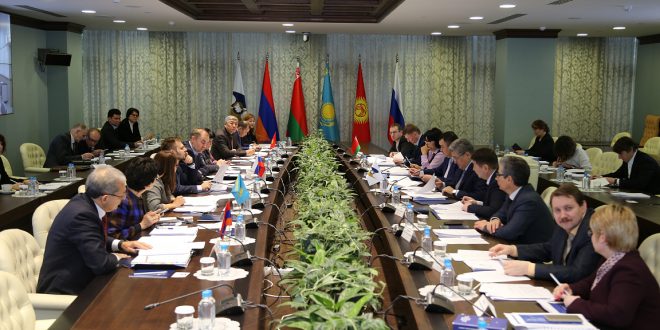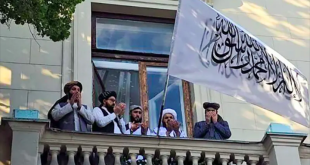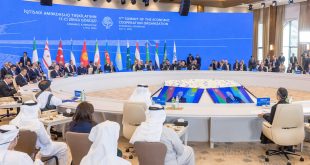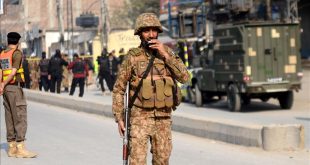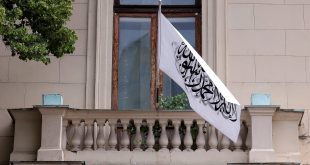AT News
KABUL – In a significant development, Russia has taken over the helm of the Eurasia Economic Council in 2023. The responsibilities of the Council, which includes the Eurasian Economic Supreme Council, the Intergovernmental Council of Eurasia, and the Economic Commission Council of Eurasia, have been transferred to the Russian Federation as of January 1, 2023. President Vladimir Putin has addressed a message titled “Priorities of the Russian Presidency” to the heads of state of the union’s member countries, outlining Russia’s focus in the new role.
The message highlights several key priorities of the Russian leadership, including ensuring energy and food security, maintaining independence in critical economic sectors and technology, accelerating the digital transformation process, establishing a common financial market, eliminating regulatory and trade barriers, developing transportation infrastructure, addressing the climate agenda, and increasing scientific and youth exchanges.
Special attention has been given to initiating the process of preparing new documents for long-term planning, which will define the main areas of convergence for the years 2030 and 2045. The development of the international agenda of the Eurasian Economic Union and the active role of the Union in both domestic and external goals remain paramount. The member countries of the “Group of Five” aim to establish mutually beneficial and equitable cooperation with external partners and international organizations, expressing their interest in deepening joint cooperation with governments in the Asia-Pacific, Middle East, Africa, and Latin America regions. This geographical expansion of contacts within the Eurasian Economic Union will help address common challenges in food and energy security, create value-added supply chains, and establish new transportation and logistics routes.
The program of actions by the Russian leadership consists of sessions of leading bodies of the Union, conferences, and seminars dedicated to various dimensions of cooperation within the framework of the Eurasian Economic Union.
Furthermore, the session of the Supreme Economic Council (Moscow, May 24-25) and the Economic Forum of Eurasia with the participation of the heads of state of the Union’s member countries were successfully held. The third Congress of Eurasia, the second Youth Forum of Independent Commonwealth of Nations countries, and the Eurasian Economic Exhibition titled “Eurasia – Our Home” took place from June 7 to 9 on the sidelines of the Intergovernmental Council of Eurasia and the Council of Heads of Government of the Commonwealth of Independent States in the city of Sochi.
Eurasian Convergence: A Global Perspective
Global trends towards regionalization of the world economy and the efforts of regional governments to create mutually beneficial conditions for closer economic integration have greatly contributed to the process of Eurasian convergence. In the current circumstances characterized by political and economic instability, sluggish global economic growth, fluctuations in financial and commodity markets, and the division of the global economic space, Eurasian convergence becomes increasingly important.
The existence of established relationships between the members of this Union, which have emerged historically in various economic fields, has significantly facilitated the successful implementation of Eurasian convergence projects. This has become a tangible competitive advantage within the Union.
The Union has been created on the basis of the experience of joint cooperation between the member states within the framework of the Commonwealth of Independent States, the Eurasian Economic Community, the Customs Union, and the Single Economic Space. However, the best global experiences and advanced international practices in creating such unions have also been taken into account. In particular, the norms, regulations, and principles of the World Trade Organization have been considered during the drafting of the Union’s agreements, which will form the basis for agreements on preferential and non-preferential trade with third countries.
According to the logic of creating rational economic unions, the formation of the Eurasian Economic Union has taken place gradually: Free Trade Zone – Customs Union – Economic Union. The development of this important format of convergence has been successfully ongoing since January 1, 2015.
The Treaty on the Eurasian Economic Union, signed on May 29, 2014, is considered a historically significant document that laid the foundation for the realization of a modern model of a deep and comprehensive economic space after the disintegration of the Soviet Union.
According to the agreement, one of the primary tasks of the Union’s activities is to improve the well-being of the citizens of the member states. In this regard, Russia, Armenia, Belarus, Kazakhstan, and Kyrgyzstan are actively working towards creating an active common market within the Union, which will ensure the free movement of goods, services, capital, and labor. Today, the Eurasian Economic Union consists of over 184.3 million consumers and represents a total gross domestic product of more than $2 trillion USD from the member states.
This new leadership role for Russia in the Eurasia Economic Council marks a significant milestone in the region’s economic integration and sets the stage for further cooperation and development among member countries.
 Afghanistan Times
Afghanistan Times
